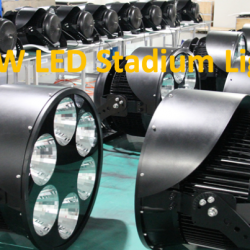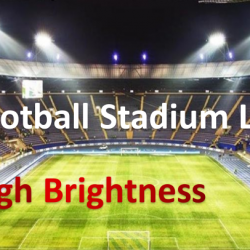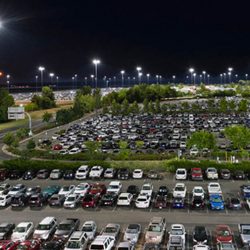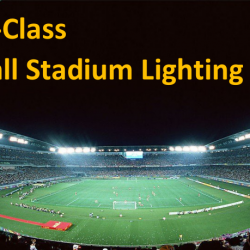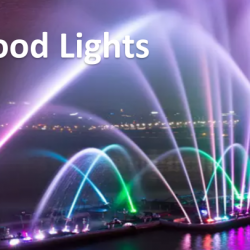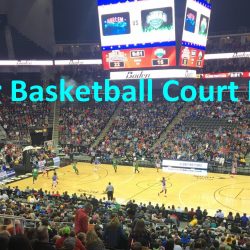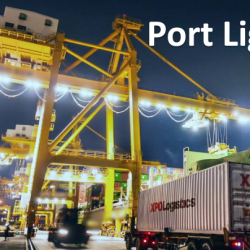12 advantages of LED Stadium Lights vs traditional lighting solutions
LED Stadium Lights vs Traditional Lighting
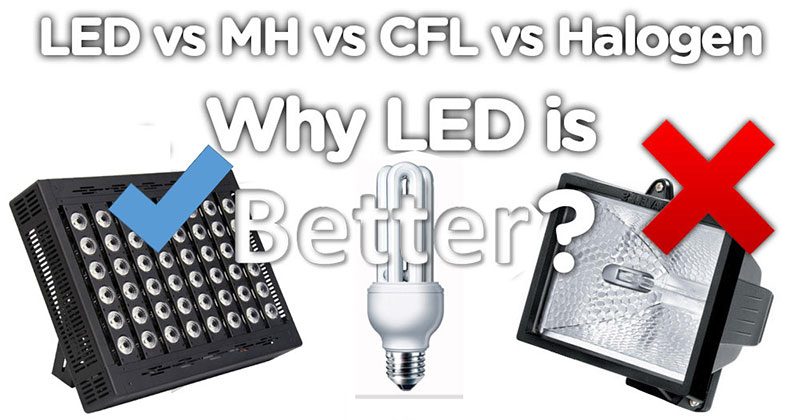
LED stadium lights that are great for indoor and outdoor sports arenas and stadiums. LED stadium lights offer a number of advantages over traditional metal halide and HID fixtures. LEDs are sure to save you money on energy and maintenance costs as they consume less power and last 4-5 times longer than traditional lights. LEDs also run much cooler than HID and metal halide bulbs, reducing the strain on air conditioning systems. Another great advantage of LED stadium lights is they do not buzz or flicker like traditional lighting systems.
On the other hand, traditional lights operate on a different principle.
Metal halides are compounds formed when metal and halogen elements combine. They include things like sodium chloride (salt) and uranium hexafluoride (the fuel used in nuclear energy reactors). Metal halide lamps produce light by passing an electric current through a combination of mercury and metal halide gas. They function very similarly to other gas-discharge lamps (e.g. mercury vapor) – the principal difference being the composition of the gas.
So, what are the advantages of LED Stadium Lights over the traditional lighting?
1. LED Stadium Lights Lifespan
Easily the most significant advantage of LED stadium lights when compared to traditional lighting solutions is the long service life. The average LED stadium lights last 50,000 to 100,000 operating hours or even more. That is 2-4 times as long as most metal halide, and sodium vapor lights. It is more than 40 times as long as the average incandescent bulb.

Less frequent replacement means two big things: lower maintenance costs in terms of labor and lower costs for replacement parts (because the bulbs simply do not last for a long time).
2. LED Stadium Lights Energy Efficiency
When you use an LED stadium light until it burns out, the energy consumption is less than 10 to 20% of the cost of running a halogen lamp at the same amount of time. This means a lot of savings on your electricity bills.
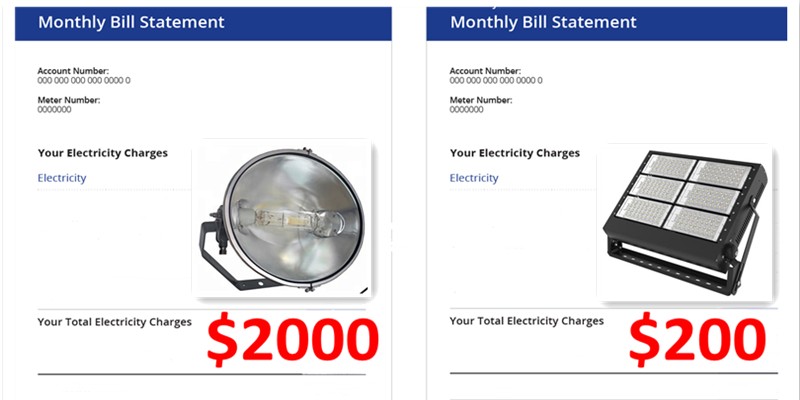
3.Improved Safety with LED Stadium Lights
Safety is perhaps the most often overlooked advantage when it comes to LED stadium flood lights. The number one hazard when it comes to lighting is the emission of heat. LEDs emit almost no forward heat while traditional bulbs like Metal halide convert more than 60% of the total energy used to power them directly into heat. That means only 40% of the energy powering metail halide lights is actually used for light (which also makes them extremely inefficient compared to LEDs). Additionally, because LED stadium lights consume less power they can operate effectively on low-voltage electrical systems. These are generally much safer in the event that something goes wrong.
4.LED Stadium Lights Have Great Color Rendering Index (CRI):
 CRI is a measurement of a light’s ability to reveal the actual color of objects as compared to an ideal light source (natural light). High CRI is generally a desirable characteristic (although of course, it depends on the required application). LED stadium lights generally have very high (good) ratings when it comes to CRI.
CRI is a measurement of a light’s ability to reveal the actual color of objects as compared to an ideal light source (natural light). High CRI is generally a desirable characteristic (although of course, it depends on the required application). LED stadium lights generally have very high (good) ratings when it comes to CRI.
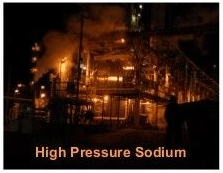
Perhaps the best way to appreciate CRI is to look at a direct comparison between LED outdoor stadium lighting(with a high CRI) and a traditional lighting solution like sodium vapor lamps (which generally have poor CRI ratings and are in some cases almost monochromatic).
5.Brightness
LEDs are much brighter than most halogen lamps. In fact, in a typical downlight, which consists of 20 halogen lamps, you can achieve the same amount of brightness using only 7 LED lamps. The lumen outputs of LED and metal halide can vary greatly at the same power consumption. For example, a 400 watt LED stadium flood light gives out more-or-less the same brightness of a 1000 watt metal halide.
6.Lower Temperature
LED stadium flood light emits far less heat than HID bulbs as it uses energy more efficiently converting more of it to light than either of the others. This is a great advantage when it is used in enclosed or recessed light fixtures. It is also a great benefit in situations where lots of lighting is being used; previously the heat emitted from the lighting would have affected the room or indoor gym temperature, adding to the load on the air-conditioning. With reduced heat emission of LED stadium floodlights, energy is also saved on air-conditioning under these circumstances.
LEDStadium lights emit less heat compared to Metal Halide. The heat generated by Metal halide can be quite surprising. This is one of the biggest problems with metal halide lighting. It raises the temperature of the room significantly. With the higher amount of heat produced by these metal halide lights, there are high risk of fire.
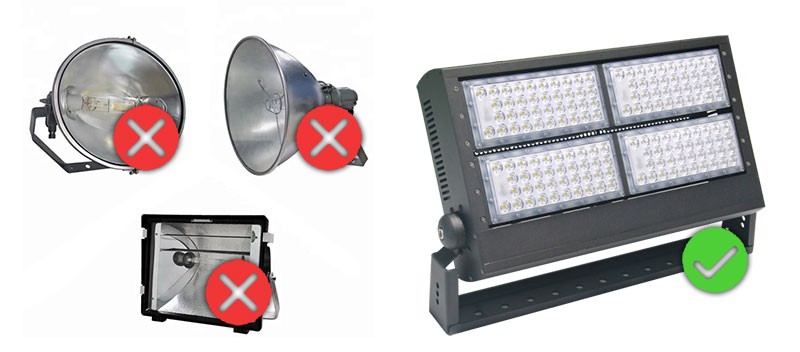
7.LED Stadium Lights are Environmentally Safe
LED Stadium Lights do not have the environmental issues common to traditional lighting solutions like mercury vapor lights. These traditional solutions contain mercury internal to the bulb and thus require special handling at the end of the product’s useful lifespan. None of these considerations are necessary with LED stadium floodlights.
8.No UV Radiation
Concerns have been raised about the UV radiation emitted by CFLs, affecting the indoor environment with electrical fields. This can cause health problems for those exposed to them over long periods. LED stadium lights are neutral in this respect, lighting indoor spaces cleanly and harmoniously.
9.Correlated Color Temperature (CCT)
LED stadium lights are available in a wide range of correlated color temperature (CCT) values. They can be purchased with a “warm,” yellowish glow, as a “cool,” white light and a variety of other options.
10.LED Stadium Lights provide instant on off switch
LED Stadium Lights are turned on and off instantaneously. There is no preheating period as with metal halide lamps. In addition, frequent switching does not result in device degradation.
11.LED Stadium Lights has great Dimming Capability
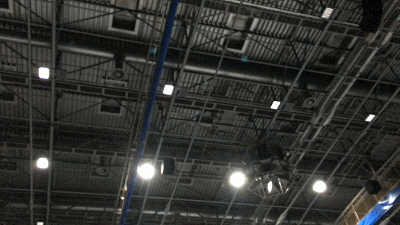 LED Stadium Lights are able to operate at virtually any % of their rated power (0 to 100%). Of note, they do require hardware specific to LED technology in order to dim (meaning you cannot use the dimming equipment for any other traditional lighting technology). A positive of operating LEDs at less than full power is that they get more efficient as the power is reduced. This also increases the total lifespan of the light itself. Both of those advantages are absent with technologies like metal halides that actually get
LED Stadium Lights are able to operate at virtually any % of their rated power (0 to 100%). Of note, they do require hardware specific to LED technology in order to dim (meaning you cannot use the dimming equipment for any other traditional lighting technology). A positive of operating LEDs at less than full power is that they get more efficient as the power is reduced. This also increases the total lifespan of the light itself. Both of those advantages are absent with technologies like metal halides that actually get
less efficient at lower power and in many cases cannot be dimmed at all.
12.LED Stadium Lights are Cheap to Purchase Compared to Metal Halide in Long Run
Using metal halide lighting is limited because of the initial cost of purchasing the unit. Unfortunately, this type of lighting will cost considerably more than LED lights for industrial and commercial lighting,reflected in the cost of light bulbs, maintenance and electricity.
Conclusion
All in all LED Stadium Lights are an incredibly useful technology that is fast becoming the first choice of residential and commercial property developers, facility operators, and lighting experts alike. If you are looking for more information on LED Stadium lights or are considering an LED stadium lighting conversion please reach out to contact us by sending email to [email protected]. We are always ready to help!
- By:topsports
- 0 comment
